One of Miami’s most charming parks has neighbors fighting over its future, waterfront views
Everybody can agree that Morningside Park is one of the most treasured and popular oases in Miami.
But everybody cannot agree on how to keep it that way.
Debate about the future of the 42-acre bayfront park could be fierce at a 6 p.m. Monday meeting inside the park’s community center at 5215 NE Seventh Ave. Miami Commissioner Ken Russell will present the city’s redesign plans, including an elaborate new living shoreline and the possible relocation of the swimming pool, which has been closed for six years.
The proposed project has caused friction between neighbors who have different visions for the park. It has raised sensitive questions about gentrification, class and race in a booming part of the city. On one side are those who advocate leaving well enough alone by making some enhancements but not major alterations that could erase the charm of the 68-year-old park. On the other side are those in favor of significant updates as well as protection from sea rise before Morningside becomes an underwater park.
Elvis Cruz, a 44-year Morningside resident and frequent thorn in the side of government leaders, says the park, located in the historic residential neighborhood of the same name, has suffered from lack of maintenance but that the city’s plan would transform the character of the park, separate people from the waterfront, obstruct views of Biscayne Bay, endanger a grove of rare palm trees and limit access to picnic tables that have been used by generations of parkgoers.
“Morningside is the most beautiful park in the city,” Cruz said. “Not only that, but it serves a much larger community beyond the 420 homes of historic Morningside. Massive changes would be an unnecessary waste of money and contrary to the wishes of those who use the park regularly.”
Changes to the park would reflect change throughout the Upper East Side of Miami, which is being gentrified by an influx of affluent new residents, says Mariella Lopez De Albear, who moved to Northeast 68th Street 22 years ago.
‘A welcoming public park’
“I was a pioneer. I bought a crack house and renovated it because I wanted to live in a diverse community,” she said. “My kids grew up going to that park and swimming in that pool with kids from all walks of life, of all colors. Now the gentrifiers seem to want to turn a welcoming public park into a segregated private one because they think it’s an eyesore to have Black families barbecuing there as they have since the 1950s. It’s a mixed community and that’s the beauty of it.”
Proponents of a park makeover say it would increase utilization by people who live in neighborhoods on the west side of Biscayne Boulevard, like Little Haiti. But Lopez De Albear disagrees. Already, users from outside Morningside must cross security gates to drive in, though guards can’t stop them because the streets and the park are public. The gates, installed years ago when the boulevard was plagued by drug traffic and street prostitution, have had the effect of turning the park into a well-kept secret even though it’s one of Miami’s largest.
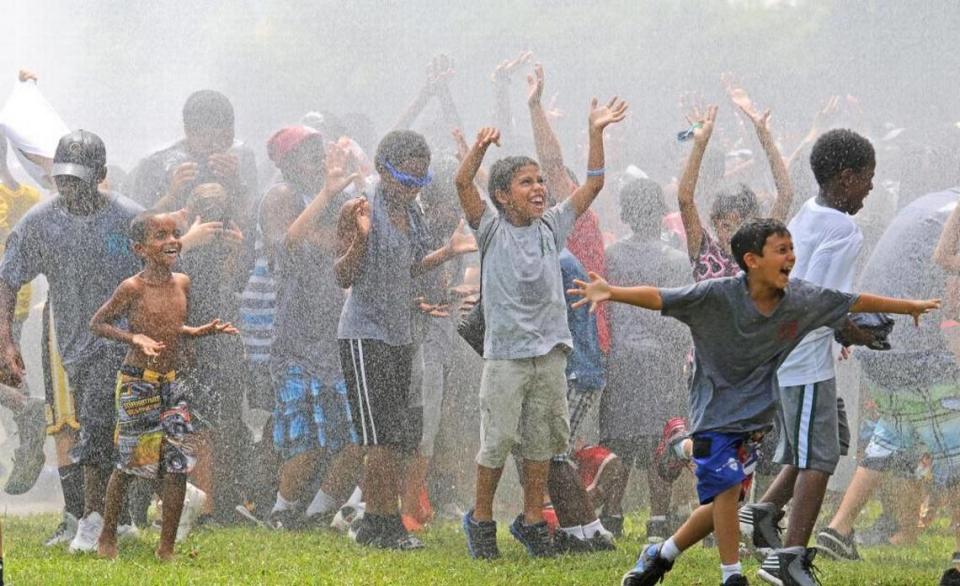
Armed with Miami Forever Bond and federal American Rescue Plan stimulus money, Russell believes now is the time to buttress Morningside from rising bay waters and make overdue improvements.
But he has met with resistance he calls “ironic” considering the city’s willingness to invest in the park.
“Our goal is to make the entire Morningside neighborhood as resilient as possible and the park could be the key green piece of infrastructure so that people don’t need to retreat,” he said. “Morningside is one of the most exposed and vulnerable parks to sea rise. It could be the template for resiliency solutions. We don’t have a choice; we have a responsibility to save it.”
Controversy over proposed baywalk
The most controversial part of the redesign is a living shoreline that Russell describes as a gray-green hybrid, utilizing both concrete and natural plantings.
Existing oolitic limestone blocks would remain as a breakwater and the first line of defense. A swath of mangroves would be added, followed by rows of coastal plants sloping upward to a seawall that would stand about 6 feet above sea level. Behind the wall would be a paved, 15-foot wide walkway or baywalk atop a berm elevated by about four feet of soil above existing ground level.
The design is a favorite of the Nature Conservancy, which would contribute a $400,000 completion grant to the city.
“This is a horrible idea, and as the mangroves grow taller and are prohibited from being trimmed, they would block our expansive views of Biscayne Bay forever, just as they have along the Coconut Grove shoreline from Peacock Park through Kennedy Park,” Cruz said. “There are a lot of myths about the value of mangroves and as we’ve seen they do not even come close to providing a watertight barrier to storm surge or sea rise. Studies show you would need a mangrove forest 100 meters wide just to diminish 66 percent of wave energy.”
Cruz is convinced that the multi-layered buffer zone is overkill that would eliminate waterfront green space and would push park users so far from the water they won’t even know it’s there. He advocates a 3-foot wide seawall similar to those in Alice Wainwright, Albert Pallot, Dan Paul, Bayfront, Baywood and Manatee Bend parks.
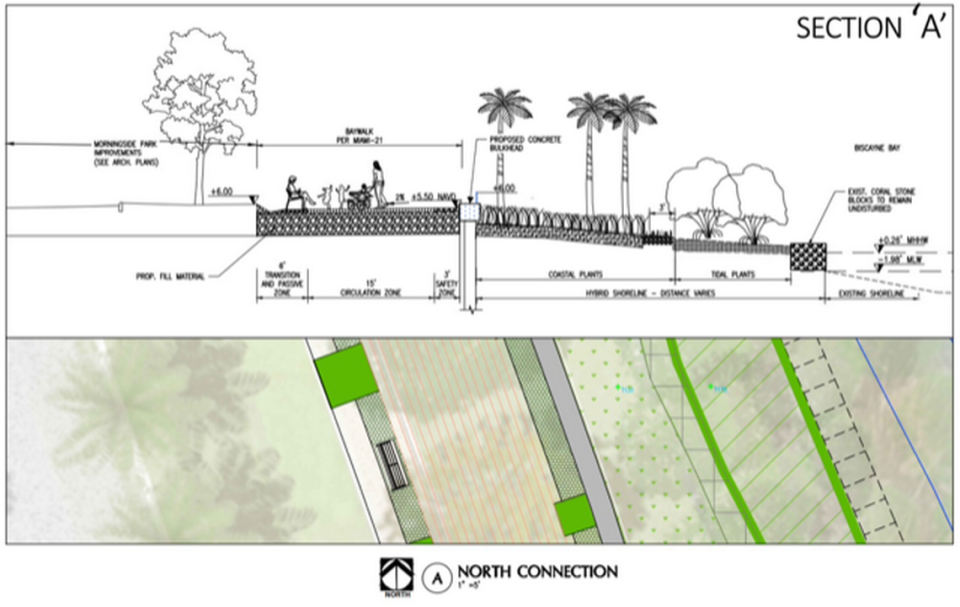
Cruz objects to what he calls the “excessive hardscape” width of the proposed baywalk, which would necessitate removal of the existing 6-foot-wide walking path and the trees that shade it. He argues that flooding that occurs in the park now is not from the bay but from rainwater that doesn’t drain, with the main trouble spot adjacent to the softball field which the city could correct by reconfiguring a walking path causing the blockage.
City: Water views will remain
Russell and city planners say water views will not be lost.
“We don’t want to just put up a large concrete wall,” Russell said. “We don’t want a giant hedge of plants either. We are cognizant of the fear that overplanting mangroves will obstruct sight lines. I will not allow a plan that ruins views. We can retain sight lines and improve them with the elevated berm walkway. We want a nice, navigable, two-way baywalk where people can view the water under shade. It will be an absolute jewel of a park.”
A 2017 Morningside Civic Association survey showed the majority of respondents are in favor of improving bay views and waterfront access.
Then there’s the issue of the swimming pool, closed in 2016 because the deck had deteriorated and was unsafe.
“If the city had maintained it, we wouldn’t have this problem,” Cruz said. “The pool is a great example of the city’s long history of demolition by neglect.”
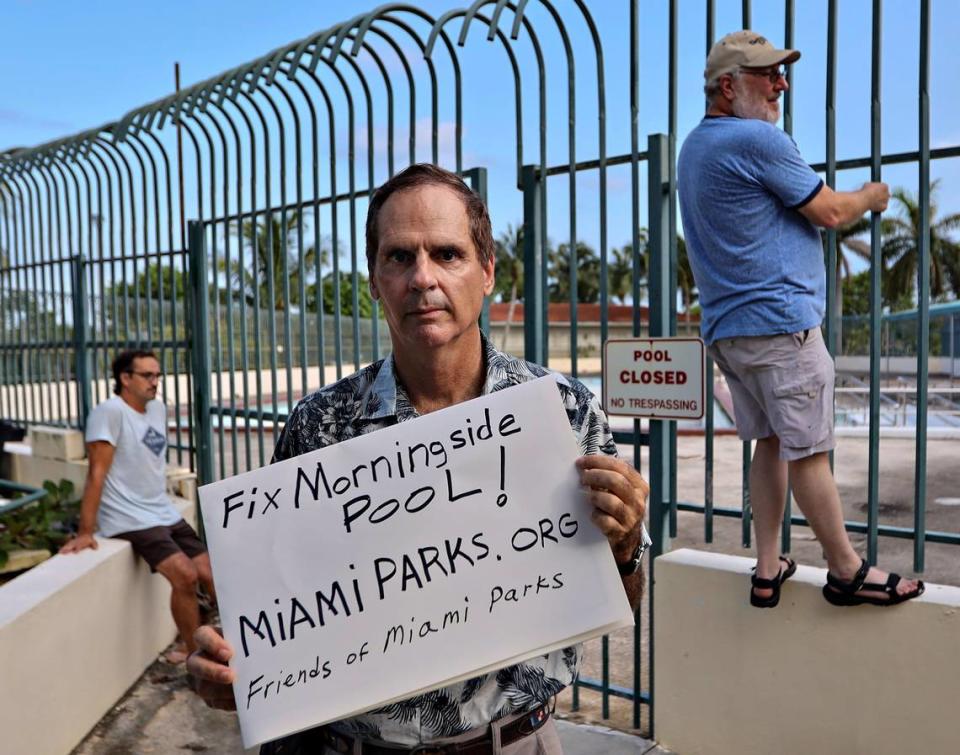
Impasse over pool
Since closure of the 1953-era pool, there have been discussions and studies about what to do about it and whether to move it. Cruz and 2,100 people who signed a petition want the pool repaired, refurbished and left in its bayfront location. In the Civic Association survey, 66 percent of respondents said they want the pool repaired and 61 percent said they opposed building a new pool in a different location.
City planners and engineers say it makes more sense environmentally and financially to build a new one on higher ground. Cruz fears if the old pool is torn down, a new, expensive pool will never be built.
“The pool would have been finished by now if not for Elvis Cruz,” Russell said. “It’s a shame he’s undermined several designs we’ve developed. We’re dedicated to having a pool in the park but the pool is outdated. While it would be wonderful to have the pool deck on the waterfront it’s no longer viable to keep it there under the FEMA floodplain map. We’re at an impasse on where to locate the pool.”
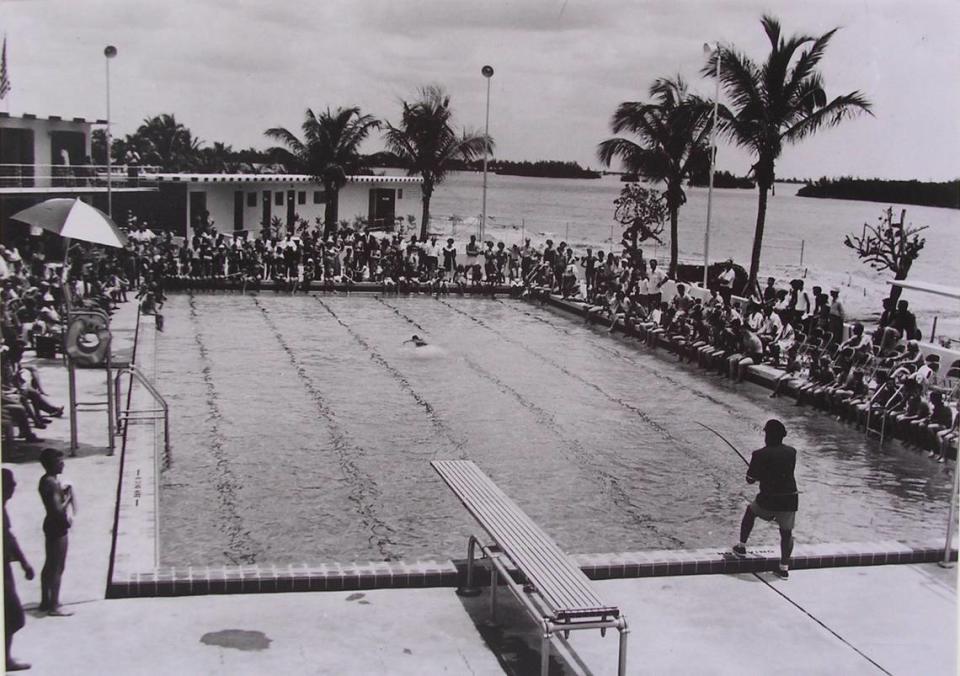
Another point of contention in the park redesign is the loop road. Right now it winds through the park providing easy access and parking for picnic sites with grills, where cookouts and birthday parties are held. The plan calls for removing part or most of the road, replacing it with grass and redirecting cars to a perimeter road.
“Why can’t that road be along the perimeter instead of a asphalt circuit through the middle eating up green space?” Russell said. “It’s a 1950s design and it’s dangerous for kids.”
Leave-it-alone park users like Cruz and Lopez De Albear say picnicking is a tradition that would be upended.
“It won’t be convenient for people to come in,” Lopez De Albear said. “Just like the gentrifiers don’t care about saving the pool because they have their own pools they don’t care about saving the loop road because they don’t use it, and they don’t want people from outside Morningside to use it. They and the city are sending a message that this park isn’t for outsiders. Miami needs to preserve history and stop wiping it out.”
Russell rejects that perspective, arguing that he kept the Morningside neighborhood from being closed off by locked gates when he was first elected. He ran for office on a pro-park platform, having joined his neighbors in a battle with the city on how to redesign and decontaminate Merrie Christmas Park.
“There was a push to make Morningside a gated community that would fence pedestrians out,” he said. “I said, ‘No, this isn’t a private community.’ I’ve been a proponent of keeping Morningside open. We need to get away from pitting neighbors against each other. It’s counterproductive. It’s obstructionism. The reason it’s taken so long to improve Morningside is because there’s so much animosity.”
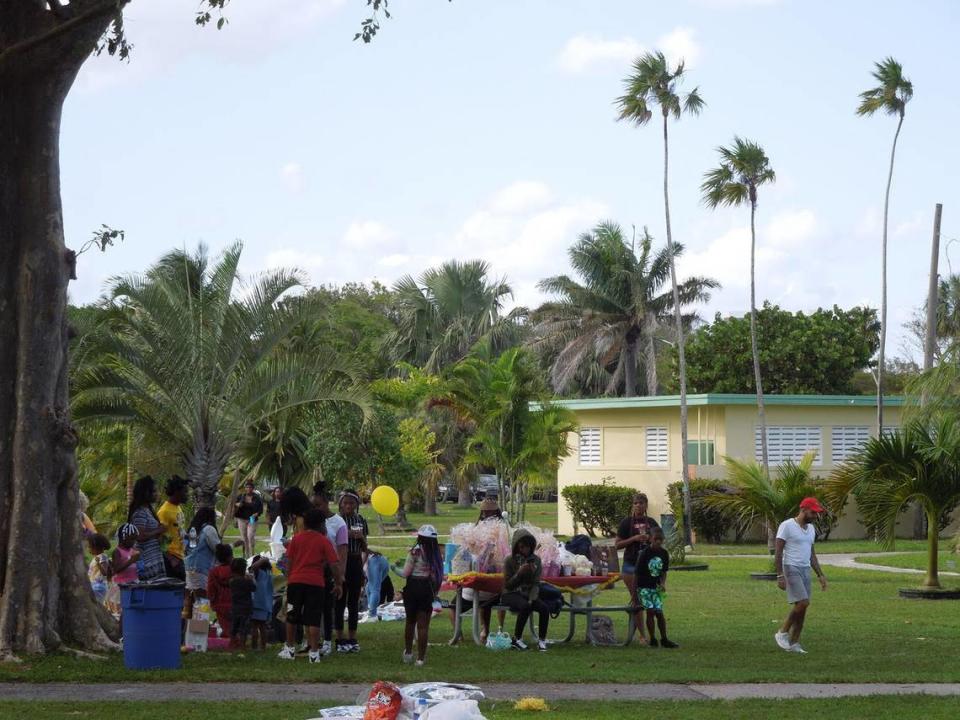
Russell and Cruz also clash on the future of the park’s Palmetum, a grove of 189 palms representing 126 species that was planted and labeled and is maintained by the South Florida Palm Society (Cruz is a former president), which runs free educational tours for schools and visitors.
The city’s plan indicates the Palmetum would be removed and replaced by another grassy area. But Russell said the rendering is not accurate and that the idea is to improve access. Relocation of the palms is being considered.
In the association survey, 58 percent of respondents said they preferred to keep the current mix of open field and athletic uses and keep the loop road as is. The park has tennis, basketball and beach volleyball courts, a soccer field, a playground and a boat launch.
“Don’t disturb the historic landscaping plan. We already have six open grassy playing fields,” Cruz said. “We don’t need more.”

 Yahoo Finance
Yahoo Finance 